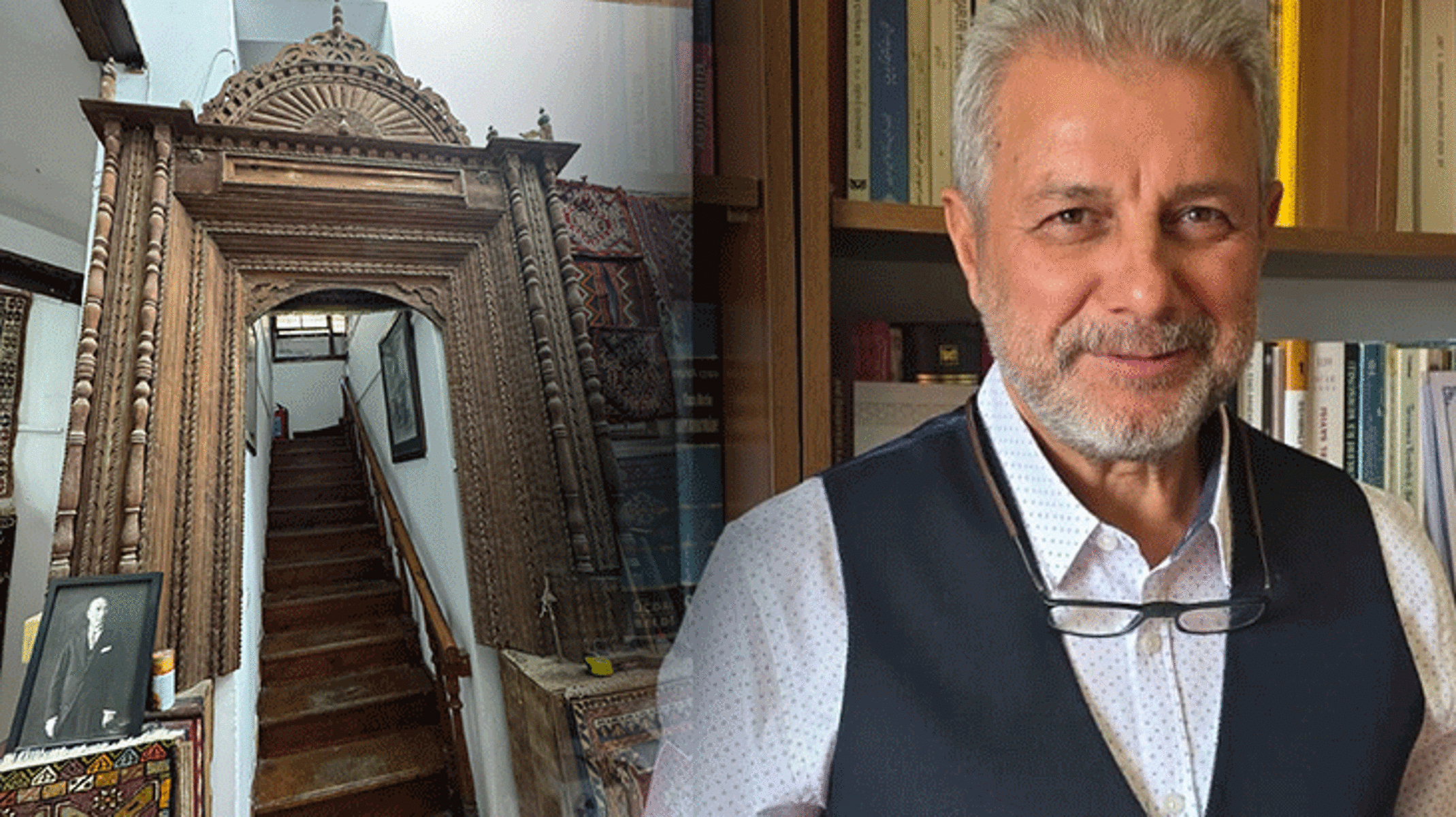
A wooden mihrab (Islamic prayer niche) discovered at the entrance of a carpet shop in Antalya’s Kaleiçi district is believed to date back to the 18th or 19th century. Art historian Assoc. Prof. Mehmet Top stated that the piece holds significant historical, artistic, and ethnographic importance, emphasizing that it should be preserved in its original location.
Connection to a Lost Mihrab from Konya
The wooden structure, mounted using metal hangers at the shop’s stairway entrance, sparked attention last month when it was suggested that it might be linked to the mihrab of Köşk Acem Nasuh Bey Mosque in Konya — a 14th-century mosque whose original mihrab was reported missing in the 1970s.
Experts from the Antalya Museum Directorate inspected the piece and prepared a preliminary report, while the final official report is expected to be issued by the Regional Directorate of Foundations. The museum’s initial findings indicated that, based on lathe marks, craftsmanship, and materials, the mihrab likely dates to a more recent period.
The shop owner stated that the mihrab was brought from Beyşehir, Konya, by the late collector H.T. in the 1990s. The report also clarified that the original Köşk Mosque mihrab was made of plaster or tiles, not wood.
Plaster or Tile Mihrab Later Replaced by Wood
Assoc. Prof. Mehmet Top, an art historian at Van Yüzüncü Yıl University, prepared an independent detailed report on the mihrab and submitted it to relevant authorities. Top explained that mihrabs reflect both the religious and artistic characteristics of their period, saying:
“It’s clear that this mihrab came from the Konya region, where wooden mihrabs were common in the 18th and 19th centuries — especially in Beyşehir, Doğanhisar, and nearby villages. Some believe it could have come from Köşk Mosque, though this cannot be confirmed. I’ve seen examples where plaster mihrabs were later covered with wooden ones. If this mihrab did come from there, it may have replaced an older plaster or tile mihrab from the 14th century.”
He added that wooden mihrabs were typically crafted separately and later installed into wall niches, much like wooden pulpits (minbars).
A 19th-Century Ottoman Masterpiece
Top’s report noted that the wooden element, now used as a decorative doorway, is undoubtedly a mihrab brought from Konya and its surroundings. The piece was made entirely of carved wood, joined using lathe and ajour techniques, and assembled with nails.
It features tiered moldings, borders, and frame decorations, along with wheat motifs and a semi-circular crown at the top — all of which clearly identify it as a religious architectural piece. Similar examples exist across Anatolia, particularly in Konya, and exhibit characteristics of the 18th–19th century Ottoman period.
Comparable Examples and Cultural Significance
According to Assoc. Prof. Top, the mihrab closely resembles others such as those in:
- Seydişehir Seyyid Harun Veli Mosque (1890)
- Ilgın Ağalar Village Mosque (1907)
- Doğanhisar Başköy Mosque (19th century)
He highlighted that mihrabs are among the most significant elements of Islamic architecture, serving as the direction of prayer (qibla), and their use as mere decoration in civilian structures is highly inappropriate.
Top concluded that this mihrab is a remarkable example of 18th–20th century Ottoman craftsmanship, blending traditional Islamic motifs with Western stylistic influences, making it an original work of art worthy of preservation.
“This mihrab is of great historical, artistic, and especially ethnographic value. It should be protected and restored to its original religious function, not used as decoration. Preserving such a unique piece is crucial for passing it on to future generations.”






